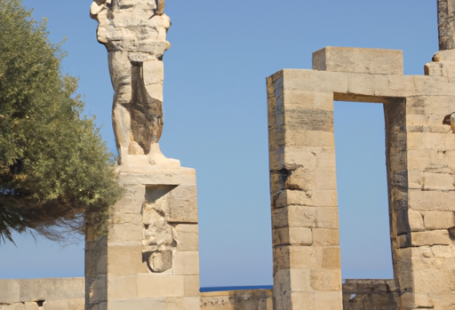The world has been home to many wonders, but few have been as celebrated as the ancient seven wonders of the world. These structures, all of which were built during the classical era of the Mediterranean, captivated the imaginations of generations of travelers and scholars alike. Although only one of the seven remains standing today, their legacy lives on.
The Ancient Wonders
The original seven wonders of the world were the Great Pyramid of Giza, the Hanging Gardens of Babylon, the Statue of Zeus at Olympia, the Temple of Artemis at Ephesus, the Mausoleum at Halicarnassus, the Colossus of Rhodes, and the Lighthouse of Alexandria. These structures were located in the Middle East, North Africa, and southern Europe, and were all built between the 16th and 2nd centuries BC.
Description of the Wonders
The Great Pyramid of Giza, located near modern-day Cairo, was the oldest and only one of the seven wonders to survive today. It was built as a tomb for Pharaoh Khufu in 2570 BC and was the tallest man-made structure for more than 4,000 years. The Hanging Gardens of Babylon were an elaborate terraced garden built for King Nebuchadnezzar II in 600 BC. The Statue of Zeus at Olympia was a 40-foot-tall gold and ivory sculpture of the Greek god, built in 456 BC. The Temple of Artemis at Ephesus was a massive marble temple dedicated to the Greek goddess of hunting, built in 550 BC.
The Mausoleum at Halicarnassus was a grand marble tomb built for King Mausolus in 350 BC. The Colossus of Rhodes was a huge bronze statue of the Greek god Helios, built in 280 BC. And finally, the Lighthouse of Alexandria was a towering lighthouse built in 280 BC at the entrance of the port of Alexandria.
Remembering the Wonders
The original seven wonders of the world have become part of our collective cultural memory. Their remains, whether standing or destroyed, have been visited and marveled at by generations of travelers, and their stories have become part of our shared history. Although only one of the seven remains today, their legacy lives on in our imaginations.





